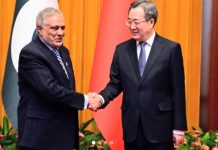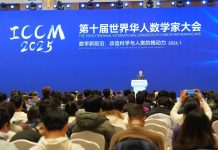From Gao Yingshi
It has been ten years since China initiated the Belt and Road Initiative (BRI). This September, the Jakarta-Bandung High-Speed Railway in Indonesia opened to traffic, drawing a barrage of international media spotlight and a fresh wave of skepticism from the West. Many outlets in the Western media sphere have cast a dubious eye on the economic viability of this railway, igniting the discourse around the purported “debt trap” diplomacy often associated with the BRI. Echoes of neo-colonialism, too, resonate through the hallways of global dialogue, painting China’s vast infrastructural endeavor in shades of imperial ambition.
Both statistical data and local leaders have rebuffed this portrayal. Take the example of sub-Saharan Africa; in 2022, debt-to-GDP ratio in this region stood at approximately 56.3%, whereas globally, it was 247%.
In 2018, former Liberia Public Works Minister W. Gyude Moore penned an article and commented, “The language of ‘debt-trap diplomacy’ resonates more in Western countries, especially the United States, and is rooted in anxiety about China’s rise as a global power rather than in the reality of Africa.” In 2022, a study from the Centre on Global Energy Policy at Columbia University also suggested that private sector maneuvering rather than Chinese scheming is more likely to induce a wave of defaults.
Another popular narrative describes China as using “untransparent” debt strategically to aid “authoritarian states.” Some argue that “Chinese aid poses a challenge to conditional aid, thus weakening democracy promotion.” Professor Andreas Freytag at the University of Jena, Germany, did research on this issue in 2022. His research discovered that Chinese aid correlates with a neutral or positive influence on the endorsement of democracy. Moreover, individuals displaying favorable sentiments towards China appear more inclined to cherish democratic values. On the other hand, USA’s favorable views do not consistently influence democratic support.
Compared to debt, the more urgent problem faced by the Global South is the inability to provide sufficient public goods, hindering faster development in these countries. In Africa’s energy sector, building a reliable electric system has been one of the significant challenges for decades. Access to electricity in sub-Sahara Africa was only 47% in 2022, forcing locals to buy their own electric generators, increasing production costs and generating more pollution.
This is something that Cao Fengze, a Chinese opinion leader and engineer, noticed. When he first arrived in Zambia, participating in the building of a water dam, he tried to buy an air fryer. He found the price of the air fryer to be much higher than expected. Cheaper air fryers were also available (usually less than 200 RMB), but everyone advised him not to buy one since the electrical power system in Zambia was highly unstable and having multiple power outages on a daily basis was very normal. After a few ups and downs in voltage, lower-quality appliances would burn out quickly. I interviewed him about his fieldwork. From his perspective, establishing a local industrial system is only possible with stable energy supply, and a gravity dam represents the most cost-effective power scheme for Zambia. Once constructed, a gravity dam requires less maintenance and still has a long lifespan. In his words, “If I embed a coin in the dam, the next person to see the coin maybe from many centuries later.”
The lack of enough public goods also greatly impacts Zambia’s agricultural sector. For instance, the price variances between Zambia and its potential market, East Africa, are significant. Crops such as maize and soybeans can be sold at higher prices in Nairobi and Kampala. In June 2022, maize price in Nairobi crossed 500$/Mt, while the price in Lusaka was just over 200$/Mt. However, farmers in Zambia are not able to benefit from these potential profits due to inefficiencies in cross-border markets and transport logistics. This forms a negative feedback loop: constrained by poverty, global south nations often find themselves unable to invest in building and maintaining interconnecting highways. Without these crucial transport links, they remain trapped and mired in poverty, unable to unleash their economic potential.
But how to break that loop? In the eyes of the Chinese, the answer is not foreign food aid but vast investment in public goods to build a system that can generate blood for itself.
That is also why China has focused on building electric and transportation facilities among the BRI participating countries.
To tackle power deficit, China funded and helped to build the Kafue Gorge Lower hydropower station, the largest power project undertaken by Zambia since its independence. Five new Chinese-built generators in this dam added 750 megawatts to the country’s national grid, adding nearly a third of this country’s electric capacity. Zambian President Hakainde Hichilema also participated in the commissioning ceremony and praised that both countries completed the project in “an ingenious way.”
Chinese infrastructure projects are more than just building roads and railways but aim to establish a systematic base for future development.
Building water dams, for example, has helped local workers learn new skills through participating in the construction work. The local government has also benefited from working closely with China in managing big projects, aligning different interests, and ensuring that everything runs smoothly.
It’s like fine-tuning a well-oiled machine. This isn’t just about making sure that trade keeps flowing but also about growing skill sets and laying down a foundation for the future.
Despite these advantages, the Belt and Road Initiative still has room for improvement. For instance, local communities affected by the projects have called for equal compensation. Moreover, there have been calls for enhanced transparency and adherence to stricter labor practices. Addressing these concerns will make the BRI a more robust and mutually beneficial initiative.
Gao Yingshi is a journalist with China Global Television Network (CGTN).






